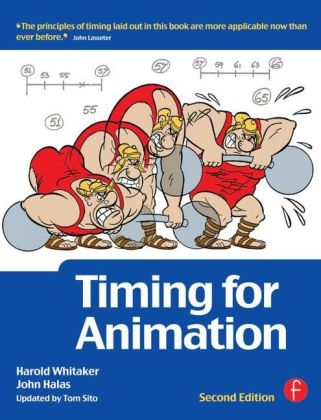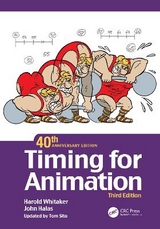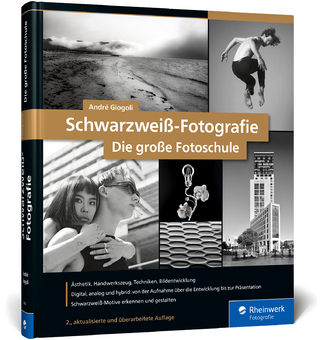
Timing for Animation
Focal Press (Verlag)
978-0-240-52160-2 (ISBN)
A classic of animation education since it first published in 1981. For more than 25 years, copies of Timing for Animation have been sitting dog-eared and spine-split on desks and workstations around the world wherever animation is produced. All you need to breathe life into your animation is at your fingertips.
All the vital techniques employed by animators worldwide are explained using dozens of clear illustrations and simple, straightforward directions. Learn how animations should be arranged in relation to each other, how much space should be used and how long each drawing should be shown for maximum dramatic effect. Fully revised and updated, the second edition includes timing for digital production, digital storyboarding in 2D, digital storyboarding in 3D, the use of After Effects and much, much more!
Timing shows weight, mood, and power and can make or break an animation - get it right the first time with these tried and tested techniques
Get straight to the good stuff with simple, no-nonsense instruction on the key techniques like stretch and squash, animated cycles, overlapping, and anticipation
John Halas is known as the "father of animation" and formerly of Halas and Batchelor Animation unit, he has produced over 2000 animations, including the legendary "Animal Farm" and the award winning "Dilemma". He was also the founder and president of the ASIFA and former Chairman of the British Federation of Film Societies. BAFTA-nominated professional animator and educator for 40 years, many of his students number among today's most outstanding animation artists. Tom Sito is the Chair for the Division of Animation and Digital Arts at USC, Woodbury College, and UCLA and has written numerous articles for Animation Magazine and Animation World Network. Tom's screen credits include the Disney classics THE LITTLE MERMAID (1989), BEAUTY & THE BEAST (1991), ALADDIN (1992), THE LION KING (1994), WHO FRAMED ROGER RABBITT (1988), POCAHONTAS (1995), FANTASIA (2000) and SHREK (2001). Tom is President-Emeritus of the Hollywood Animation Guild Local 839 IATSE. He is vice president of the International Animator's Society (ASIFA/Hollywood) He is a member of the Motion Picture Academy, the National Cartoonists Society and Hollywood Heritage. In 1998 he was named in Animation Magazine's list of the 100 Most Important People in Animation.
Foreword by John Lasseter
Chapter 1 Preface to 1981 edition
Chapter 2 What is good timing?
Chapter 3 The storyboard
Chapter 4 Traditional hand drawn storyboards
Chapter 5 Digital storyboarding in 2d
Chapter 6 Digital storyboarding in 3d
Chapter 7 The use of After-effects
Chapter 8 The Responsibility of the director
Chapter 9 The basic unit of time in animation
Chapter 10 Timing for hand-drawn film
Chapter 11 Timing for overseas production
Chapter 12 Timing for digital production
Chapter 13 Motion or Performance Capture
Chapter 14 Animation and properties of matter
Chapter 15 Movement and Caricature
Chapter 16 Cause and effect
Chapter 17 Newton's laws of motion
Chapter 18 Object's thrown through the air
Chapter 19 Timing of inanimate objects
Chapter 20 Force transmitted through a flexible joint
Chapter 21 Force transmitted through jointed limbs
Chapter 22 Spacing of drawings
Chapter 23 Timing a slow action
Chapter 24 Timing fast action
Chapter 25 getting into and out of holds
Chapter 26 Single frames or double frames?
Chapter 27 How long to hold?
Chapter 28 Anticipation
Chapter 29 Follow through
Chapter 30 Overlapping action
Chapter 31 Timing an oscillating movement
Chapter 32 Timing to suggest weight and force
Chapter 33 Timing to suggest force: repeat action
Chapter 34 Character reaction and takes
Chapter 35 Timing to give feeling of size
Chapter 36 The effects of friction, air resistance and wind
Chapter 37 Timing cycles
Chapter 38 Scenes with multiple character
Chapter 39 A word about Massive
Chapter 40 Effects animation:
Chapter 41 2D Hand drawn effects: flames and smoke
Chapter 42 Water
Chapter 43 Rain
Chapter 44 Snow
Chapter 45 Explosions
Chapter 46 3D Digital Effects
Chapter 47 repeat movements of inanimate objects
Chapter 48 Timing a walk
Chapter 49 Types of walk
Chapter 50 Spacing of drawings in perspective animation
Chapter 51 Timing animals' movements
Chapter 52 Bird flight
Chapter 53 Speed lines, and motion blur
Chapter 54 Snap Principle: Accentuating movement,
Chapter 55 Strobing fast run cycles
Chapter 56 Characterization
Chapter 57 The use of timing to suggest mood
Chapter 58 Synchronizing animation to speech
Chapter 59 Lip-sync
Chapter 60 Timing and music
Chapter 61 Camera movements: Traditional
Chapter 62 Camera Movements: Digital
Chapter 63 Editing for different animated media
Chapter 64 Feature films
Chapter 65 Television
Chapter 66 Downloads and short form media games
Chapter 67 Traditional skills and Future technological development.
| Erscheint lt. Verlag | 2.9.2009 |
|---|---|
| Verlagsort | Oxford |
| Sprache | englisch |
| Maße | 189 x 246 mm |
| Gewicht | 498 g |
| Themenwelt | Kunst / Musik / Theater ► Film / TV |
| Kunst / Musik / Theater ► Fotokunst | |
| Sachbuch/Ratgeber ► Freizeit / Hobby ► Fotografieren / Filmen | |
| ISBN-10 | 0-240-52160-9 / 0240521609 |
| ISBN-13 | 978-0-240-52160-2 / 9780240521602 |
| Zustand | Neuware |
| Haben Sie eine Frage zum Produkt? |
aus dem Bereich



